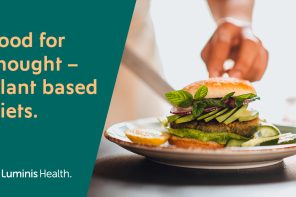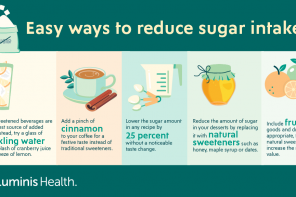Since fall is here, it’s time to pull out the sweaters and fire pits, visit the pumpkin patch, watch your favorite football team, and breathe the crisp air as you enjoy fall foliage. Whatever the fall activity, chances are you’ll swing by your local coffee shop for a pumpkin spice latte, cold brew, or cup of joe. But did you know that sweetened beverages account for nearly half of all added sugars consumed in our diets? Never fear! Minor adjustments to your drink order can cut back significantly on calories and added sugar. If you are trying to lose weight, every calorie counts.
Empty Calories
It’s easy to drink a lot of calories without realizing it, because beverages sweetened with sugar aren’t as filling as food. Sugary drinks may bring comfort, but they don’t offer nutritional benefits. That’s why we consider these drinks “empty calories.” A good tip? Everything in moderation. Too many sugary drinks can contribute to the development of many diseases, including obesity, type 2 diabetes and some types of cancers.
Which Drink is Right for You?
A plain cup of brewed cup of coffee has less than five calories and no fat. Cold brew coffee without any extras can be just as healthy as regular coffee. A general rule of thumb is lattes contain the most milk and are the highest in calories, fat, and protein. Cappuccinos contain a bit less milk but still provide a good amount of calories. Macchiatos contain only a splash of milk and are significantly lower in calories, fat, and protein.
Tips for Reducing Sugar in Caffeinated Beverages
There are simple ways you can reduce the amount of sugar you consume each day in your favorite coffee drink. Here are some ideas:
- Request less syrup. When ordering a latte, ask the barista to limit the syrup. A single pump of flavored syrup can provide more than five grams of added sugar. (For context, four grams of sugar is equal to about one teaspoon.)
- Try a smaller size. You can still enjoy your favorite drink, but with less sugar.
- Know your coffee shop lingo. Many coffee shops use terms like “lightly sweet” or “skinny” to refer to drinks with less added sugar. The skinny options usually include nonfat milk, the removal of whipped cream and the replacement of regular syrup with sugar free. For example a grande iced vanilla latte from Starbucks has 28 grams of sugar, while the skinny version has only ten grams of sugar.
- Ditch the toppings. While whipped cream, caramel and chocolate drizzle toppings are delicious, they add a heap of empty calories and added sugar.
- Mix it up. Consider occasionally switching up your sweet drink order with a seasonal unsweetened tea. You can enjoy it iced or hot. It has all the flavor and none of the sugar. And if your sweet tooth needs to be satisfied, use sugar substitutes to sweeten your tea.
Tips for Less Sugar in Other Beverages
In addition to coffee drinks and sodas, smoothies and bottled teas can also contain more sugar than you might expect. By making your smoothie or iced tea at home, you have more control over the sugar content. In smoothies, fruit is usually sweet enough that you don’t need any additional sugar or honey. Use plain yogurt, unsweetened milk or almond/soy milk or water instead of flavored yogurt or sweetened milk to help reduce sugar.
For a festive fall smoothie, add a scoop of canned pumpkin and a dash of pumpkin spice or a cup of chopped apple with a sprinkle of cinnamon to unsweetened yogurt and milk. For iced tea, make a pot of caramel apple black tea or pumpkin spice black tea, let it cool and then serve over ice.
Cut Back on Sugar Slowly
No one expects you to quit cold turkey. It’s best to cut back on your sugar intake gradually so that your taste buds get used to less sugar. For some great alternatives, consider unsweetened sparkling water or seltzer.
Whether at home or at the coffee shop, think about ways to reduce sugar in your drinks. These small steps can lead to big health benefits. To learn more, or to make an appointment for nutritional support, visit our webpage.




